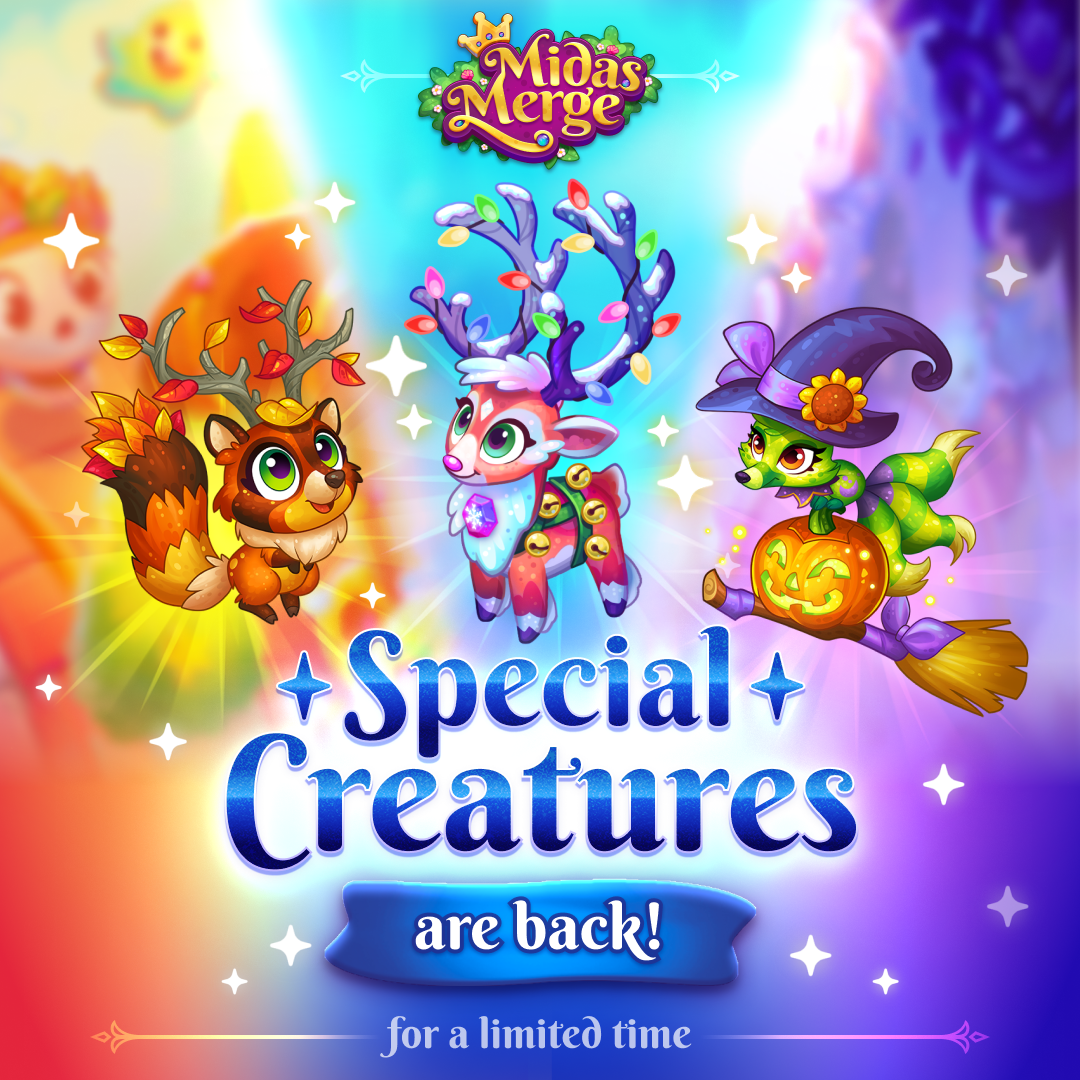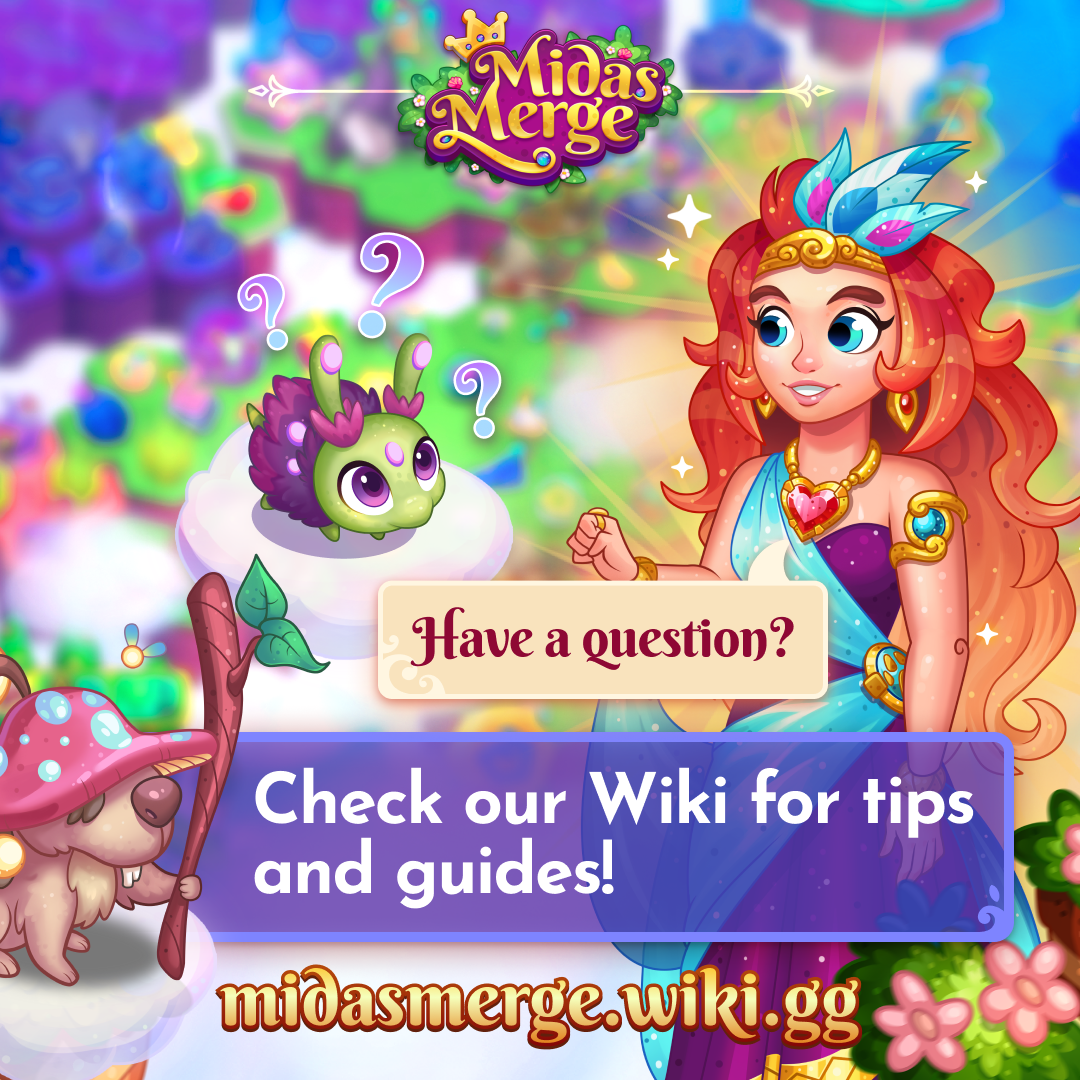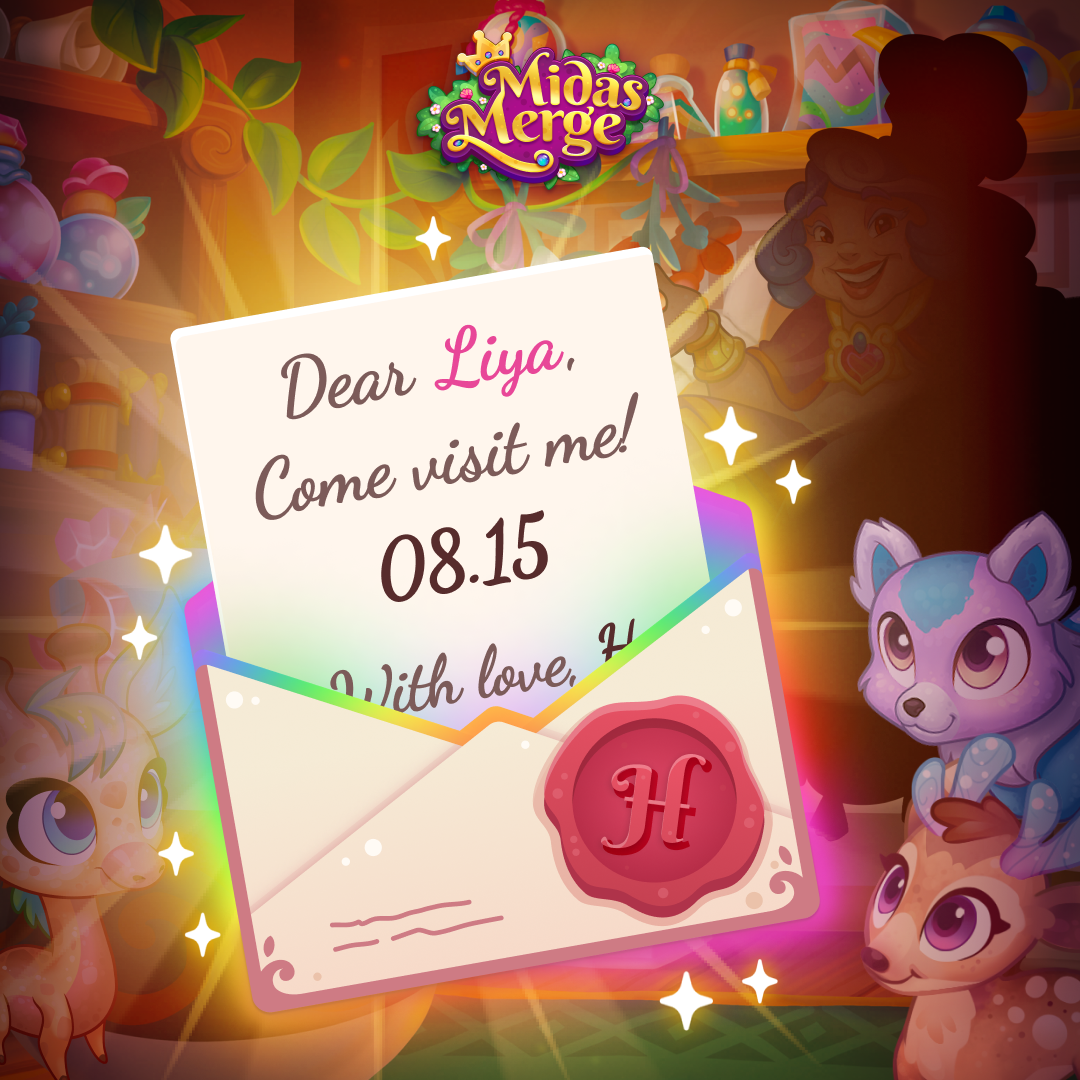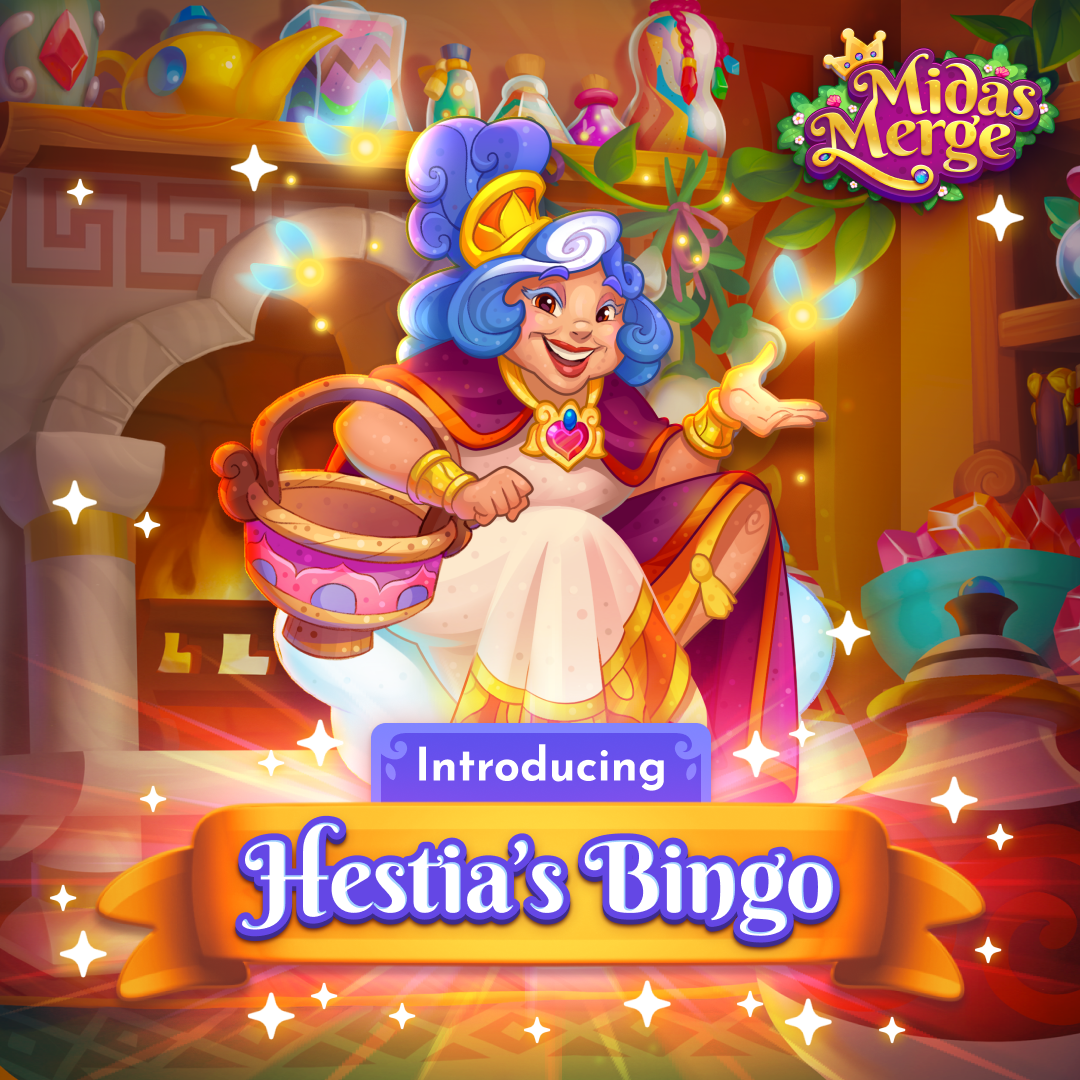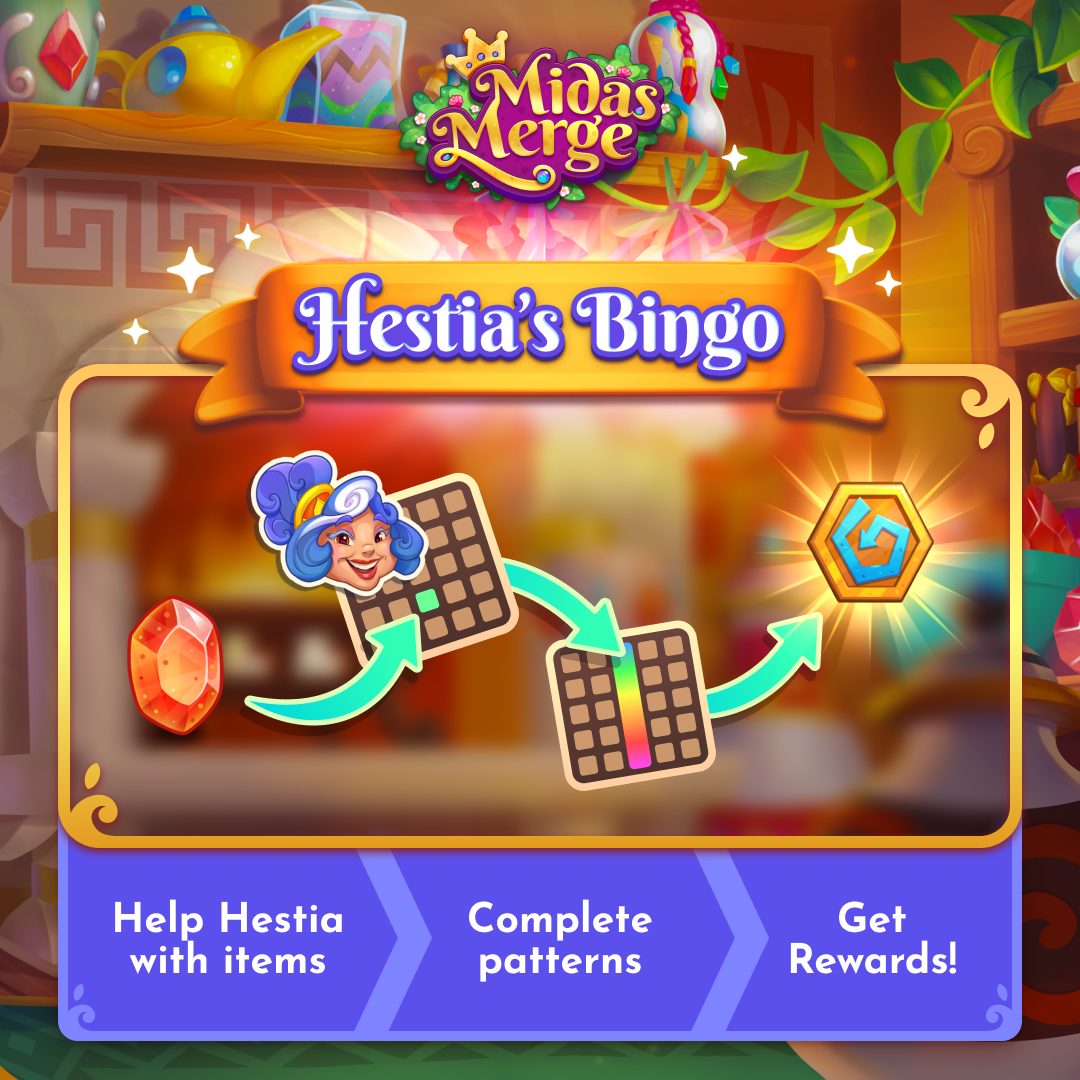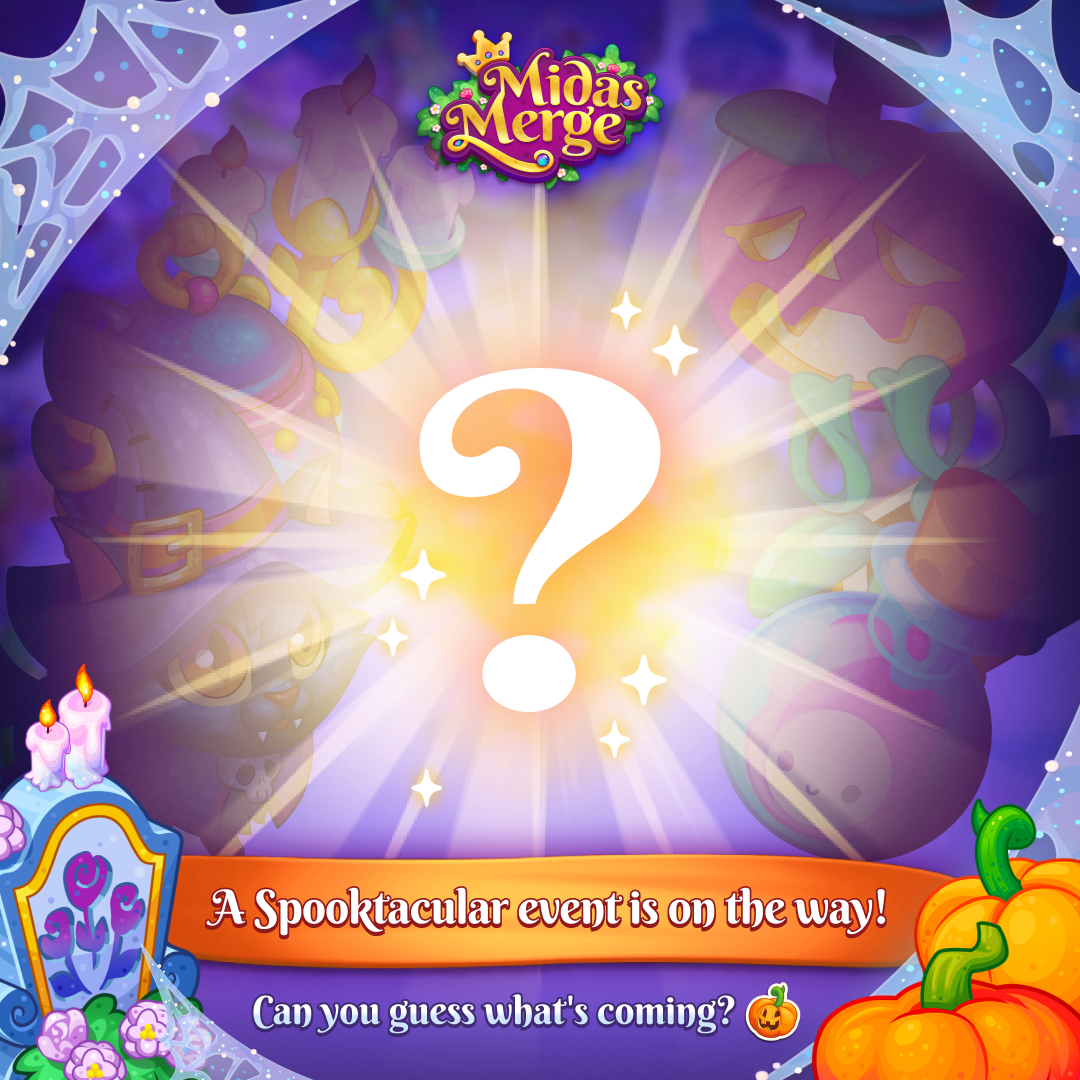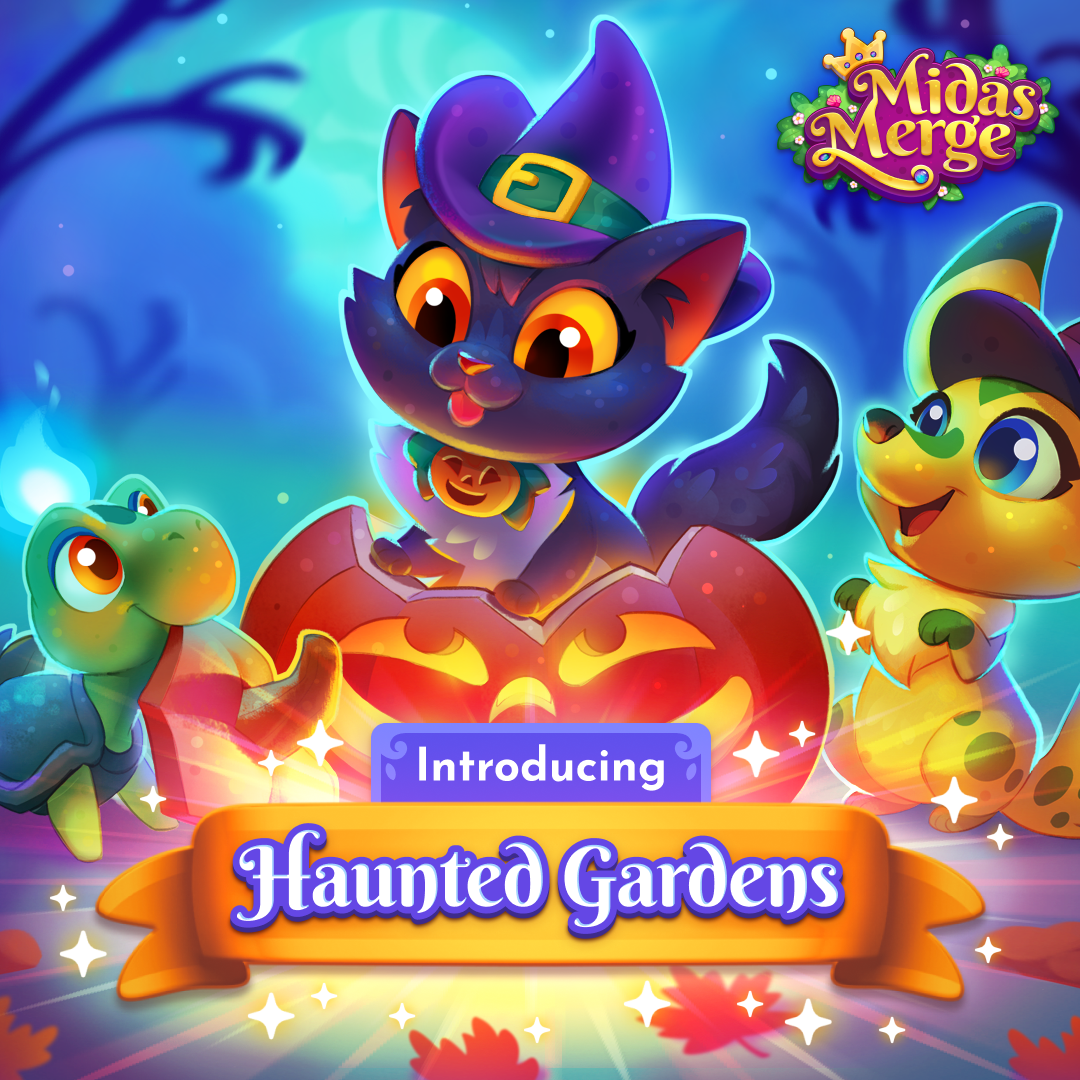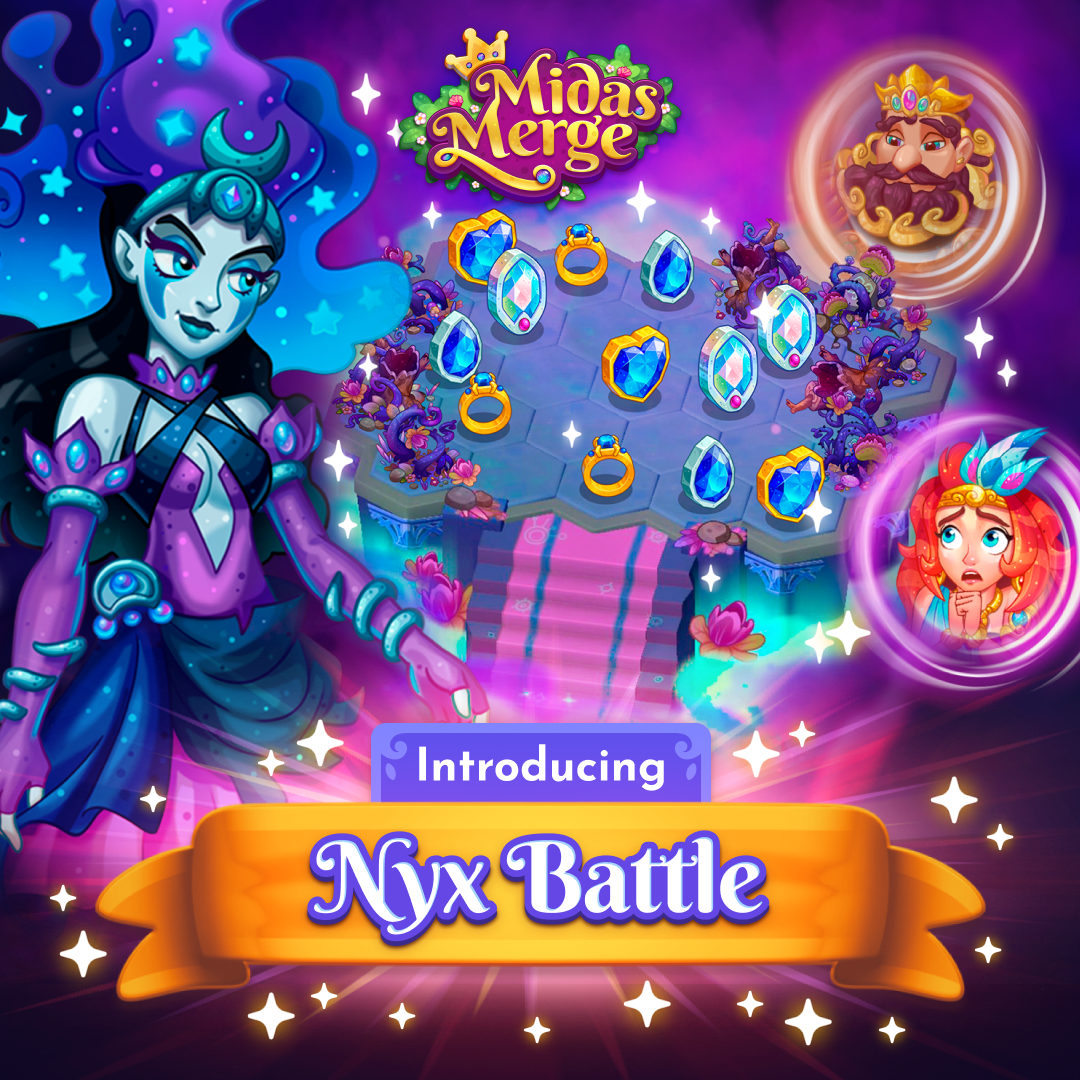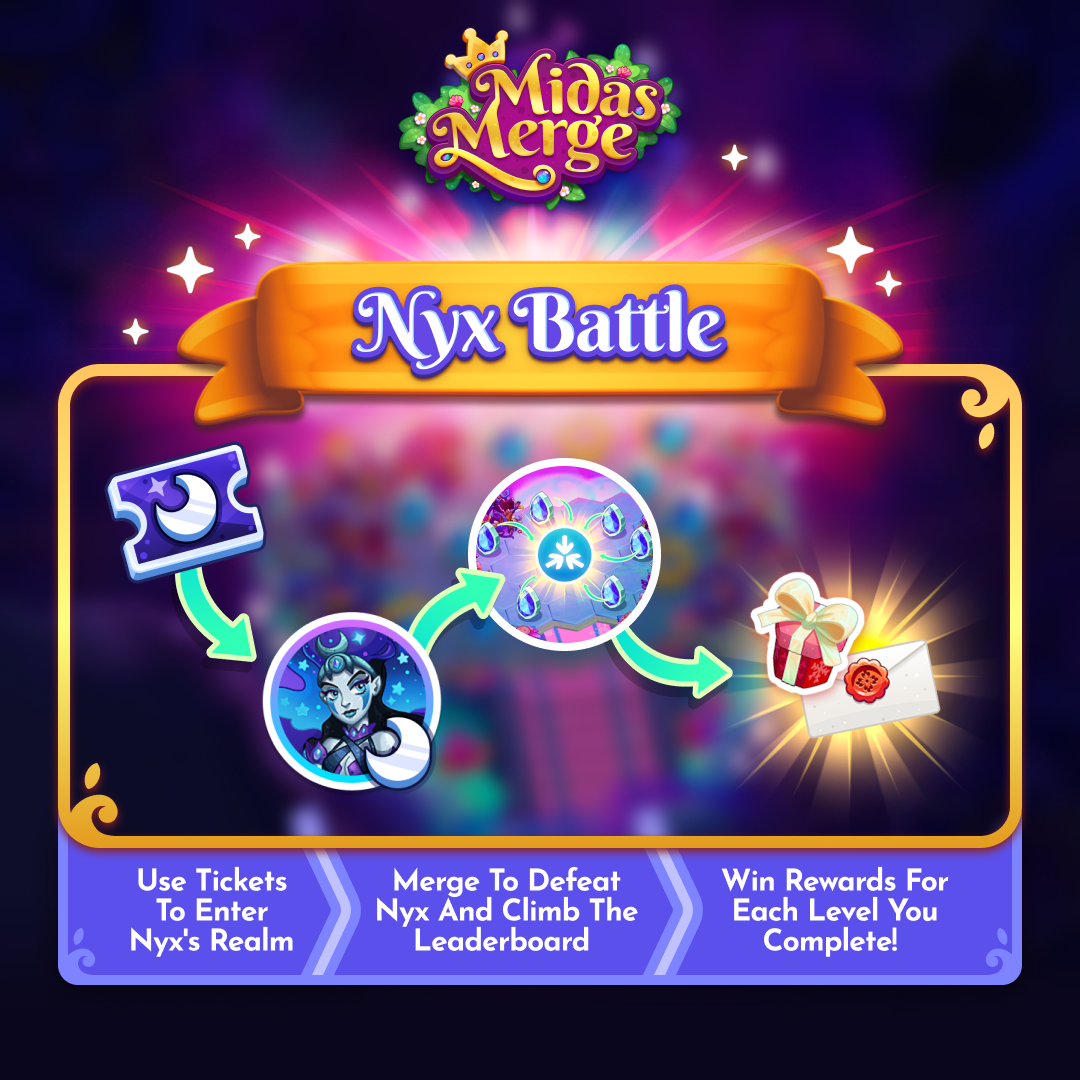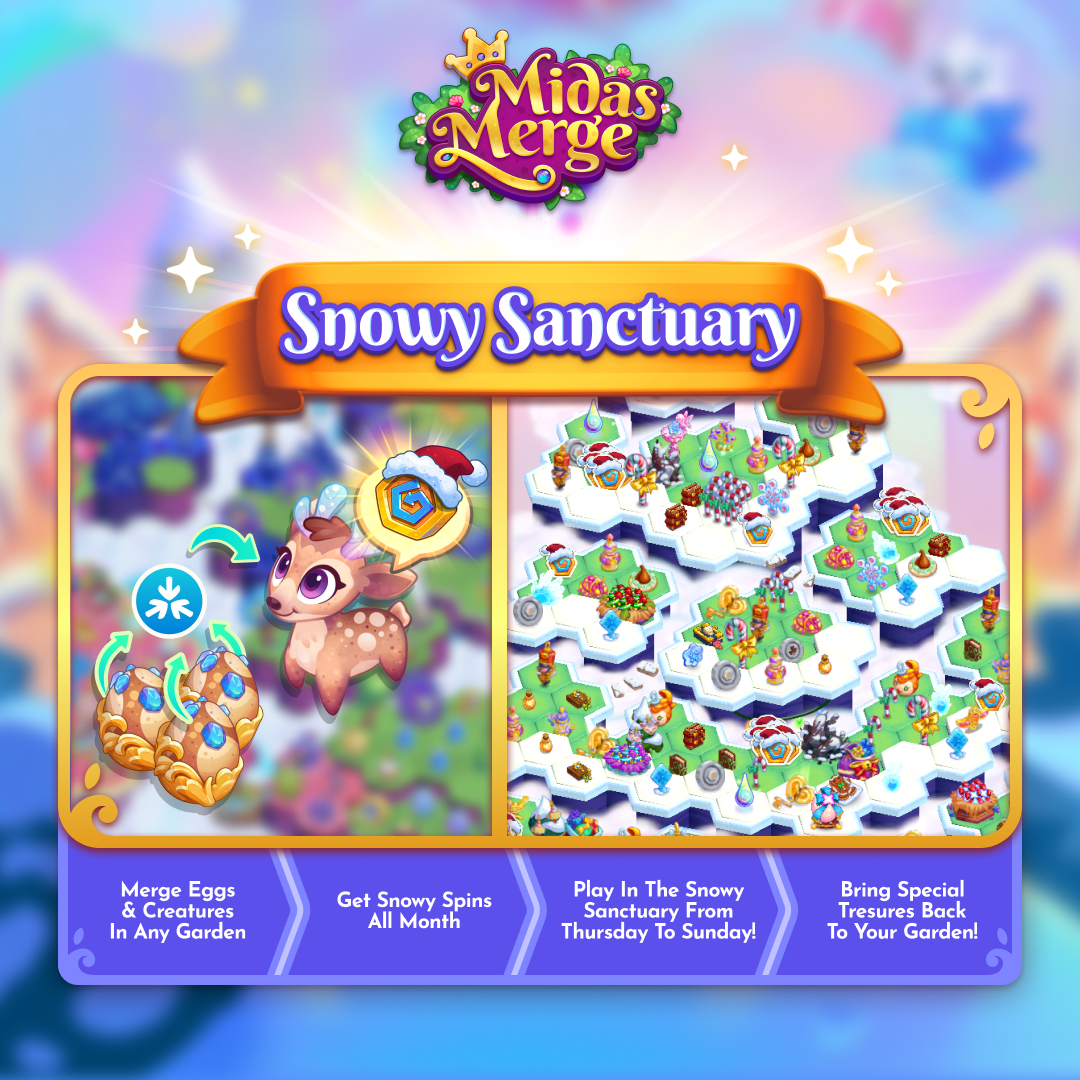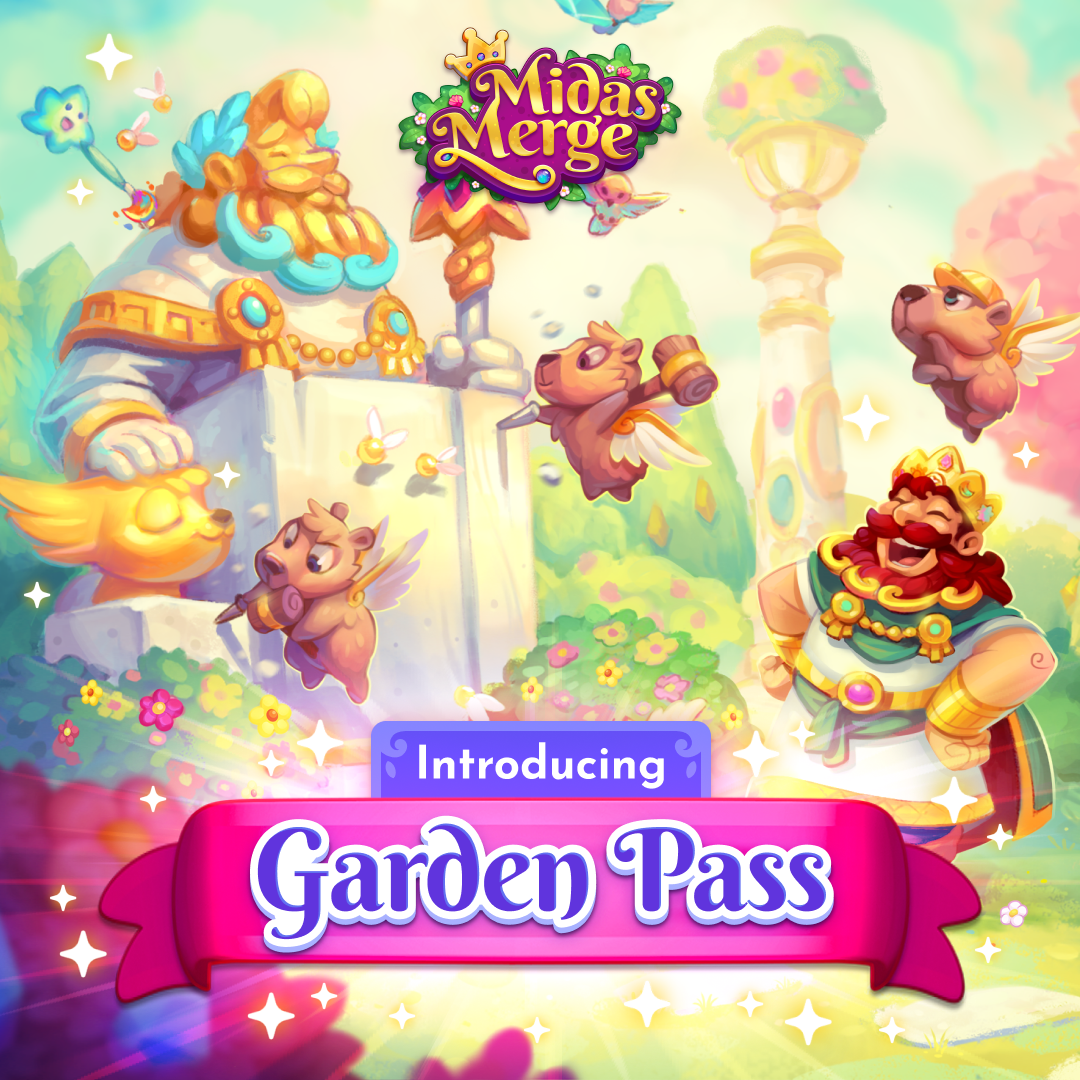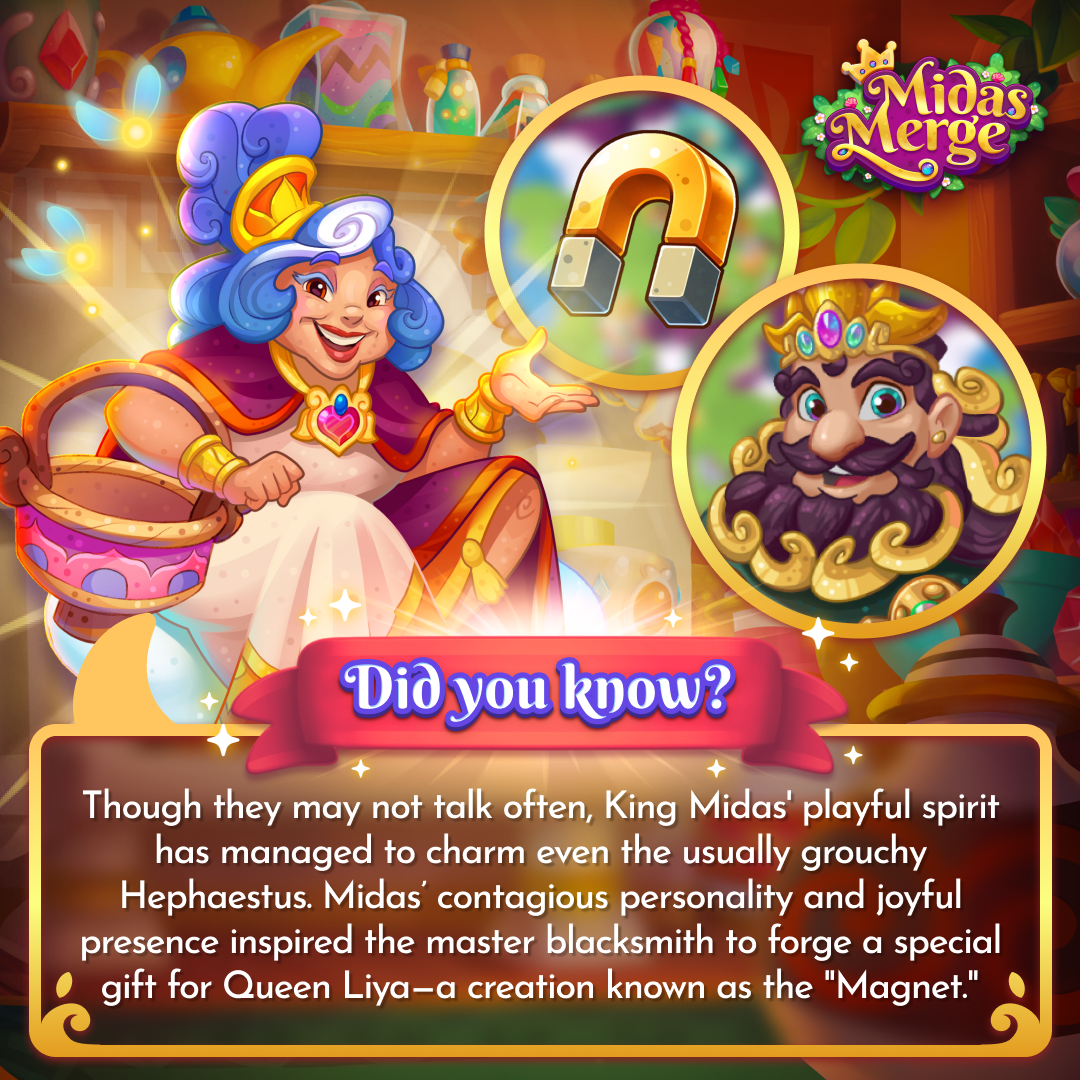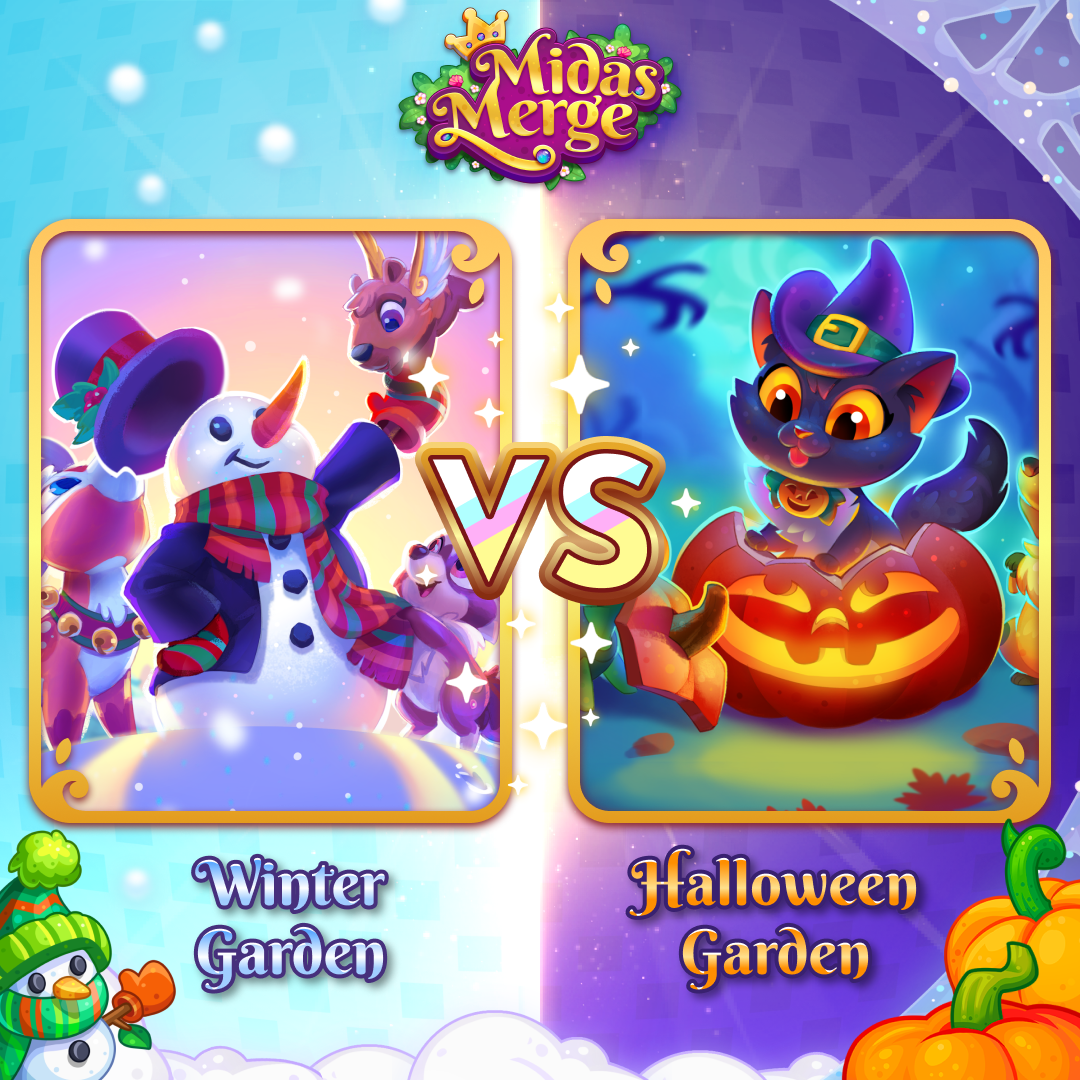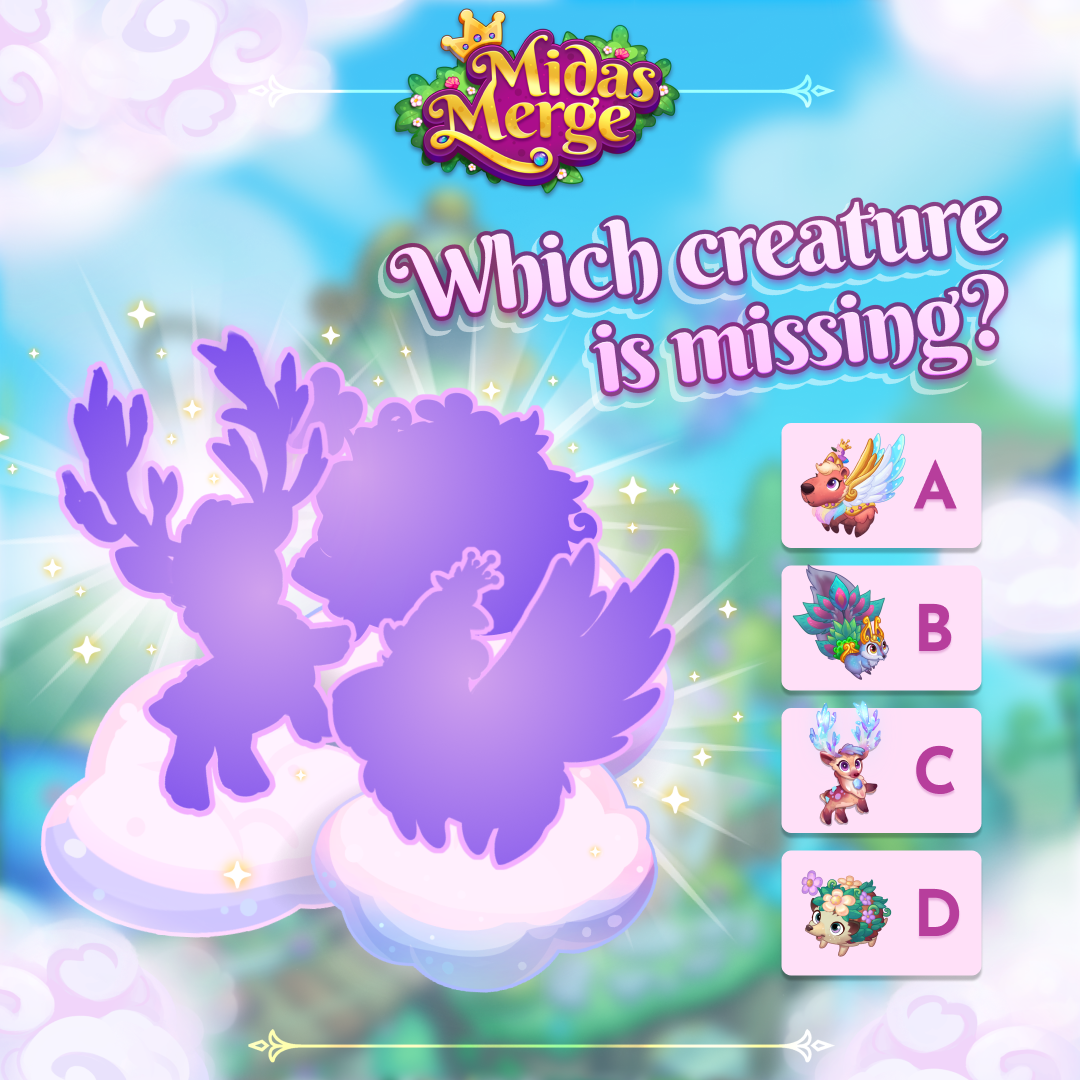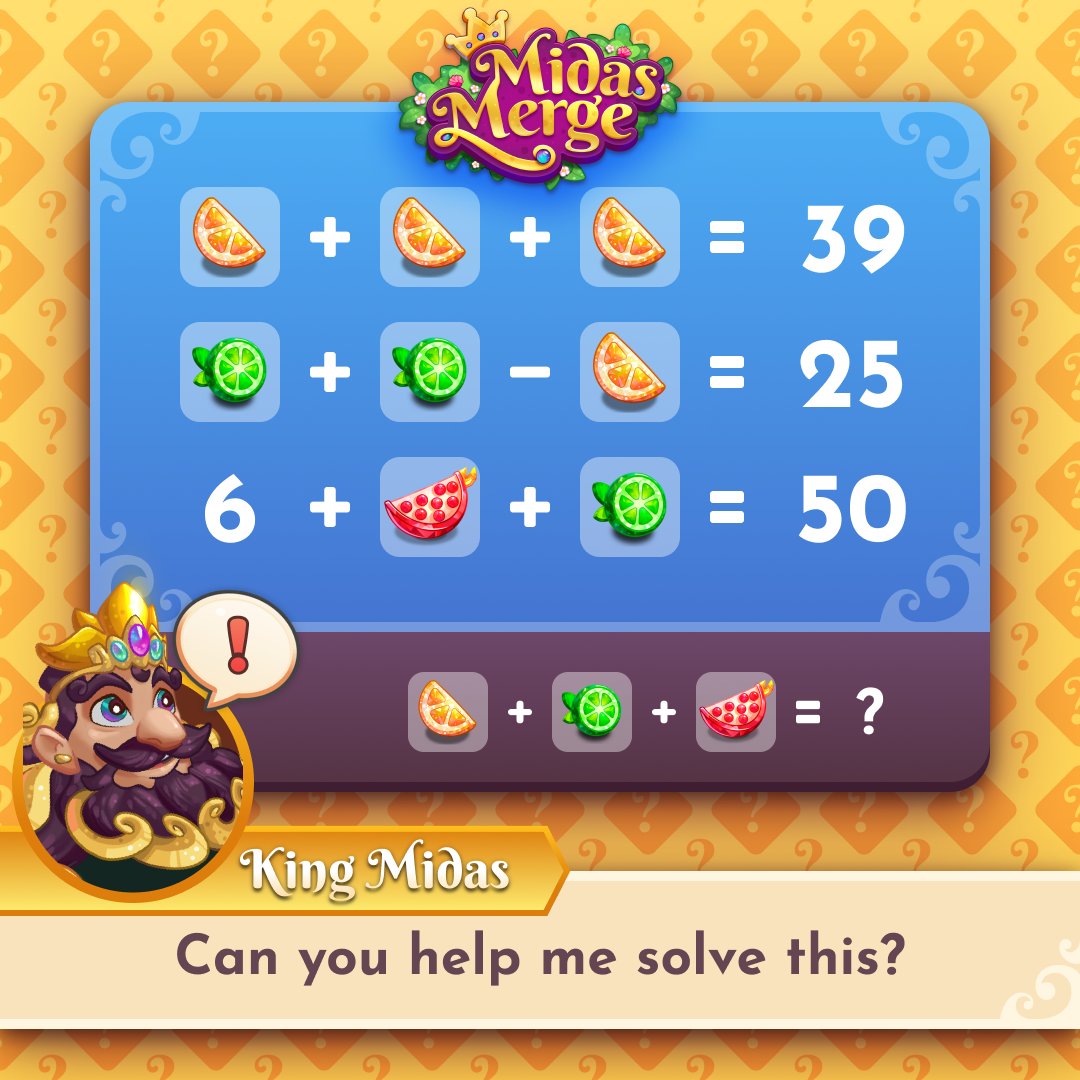From systems to polish: versatility in a magical world
This is a collection of projects developed for Midas Merge, a cute and fun mobile merge 3 game.
I worked across multiple areas, from feature prototyping, in-game systems, and Design System component libraries, to illustrations and seasonal content for live ops.
I worked across multiple areas, from feature prototyping, in-game systems, and Design System component libraries, to illustrations and seasonal content for live ops.
Hestia’s Bingo
A magical, event-driven feature designed to boost engagement and reward progression
I was responsible for the entire feature, from concept to final implementation — including UI/UX design, asset illustrations, animation and VFX.
This feature introduced Hestia, a brand-new character in the game. To enhance player immersion, the interface was designed to feel like you’re inside Hestia’s cozy home, delivering magical items directly into her enchanted fireplace.
The event’s core loop was built around collecting and delivering items, with big rewards for completing lines or the full board. Every visual element — from layout to animations — was crafted to feel warm, festive, and alive, making the experience both intuitive and enchanting.

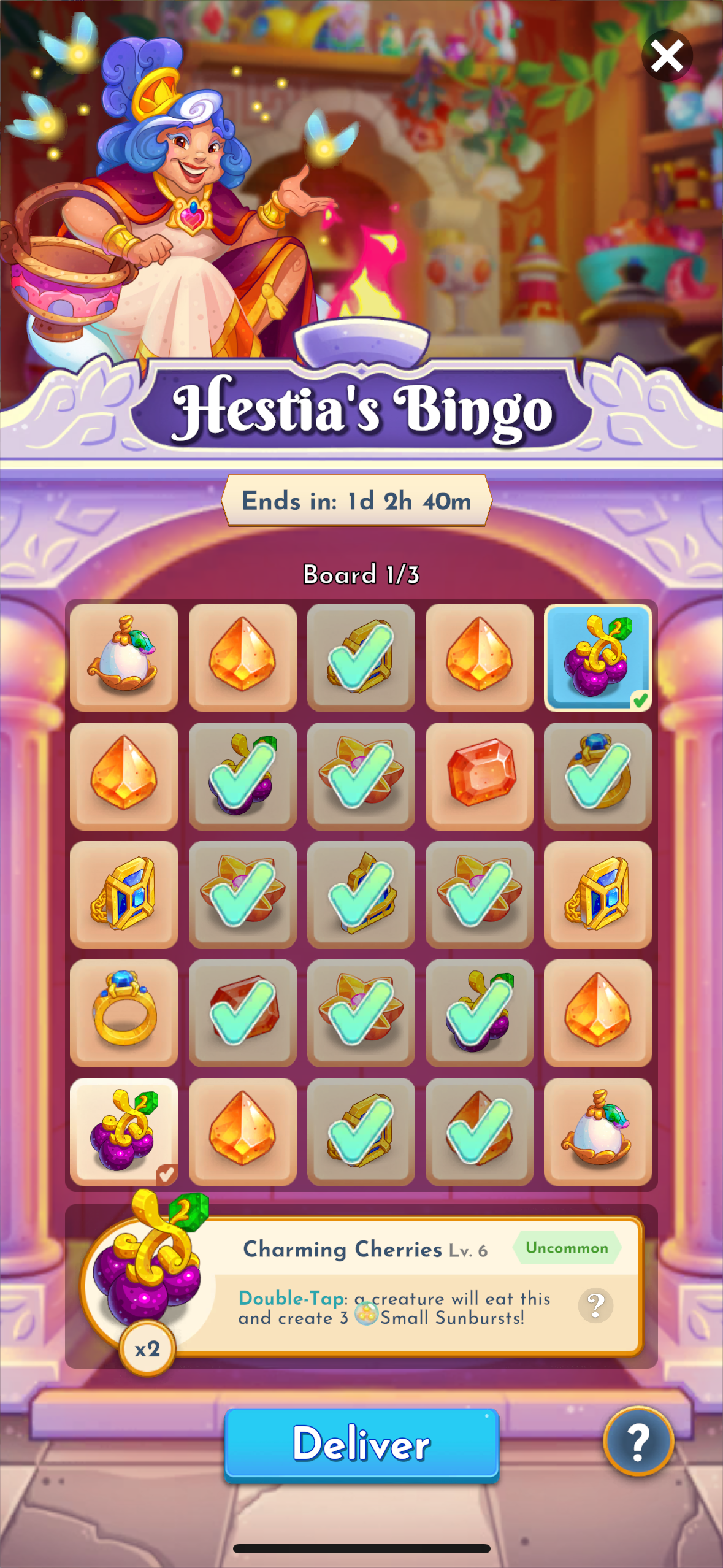
Nyx Battle
Face the shadows in the game’s first true boss fight
This feature marked a bold shift in gameplay — the first time players confront the main villain, Nyx, in an intense, real-time battle.
While still rooted in the game’s core merge mechanics, Nyx Battle stands out by introducing a combat system that demands fast thinking and quick reactions — something never seen before in the game.
Players enter Nyx’s dark realm, where they must merge tiles to launch attacks while she corrupts the board with spreading Nightmares. The challenge lies in keeping the board clear while dealing damage before it’s completely overtaken.
I contributed in this feature by working on the design of consumable items and the concept for Nyx’s world, helping craft an atmospheric, ominous setting that visually supports the tension of the encounter.

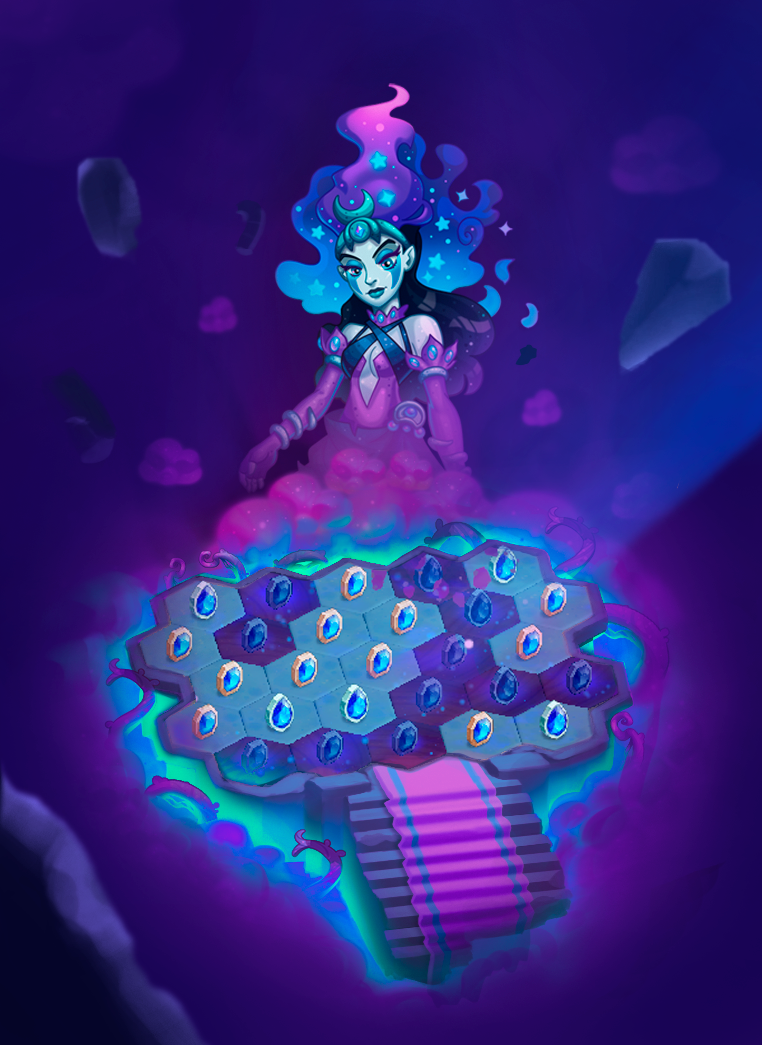
Paintovers and Illustrations
Bringing extra polish and personality to the world
Alongside UI/UX, I often contribute with paintovers, concept sketches, and visual polish to help define or refine the artistic direction of new features and environments.
These illustrations are usually used to enhance storytelling, align mood between design and art, or help guide the final art production. Whether it’s pushing lighting for a more magical atmosphere or giving a new feature that extra “wow” factor, I enjoy jumping in to make the visuals shine.
In the examples below, you'll find a mix of paintovers, in-game Items, and UI Icons I’ve worked on to support world-building and overall cohesion.

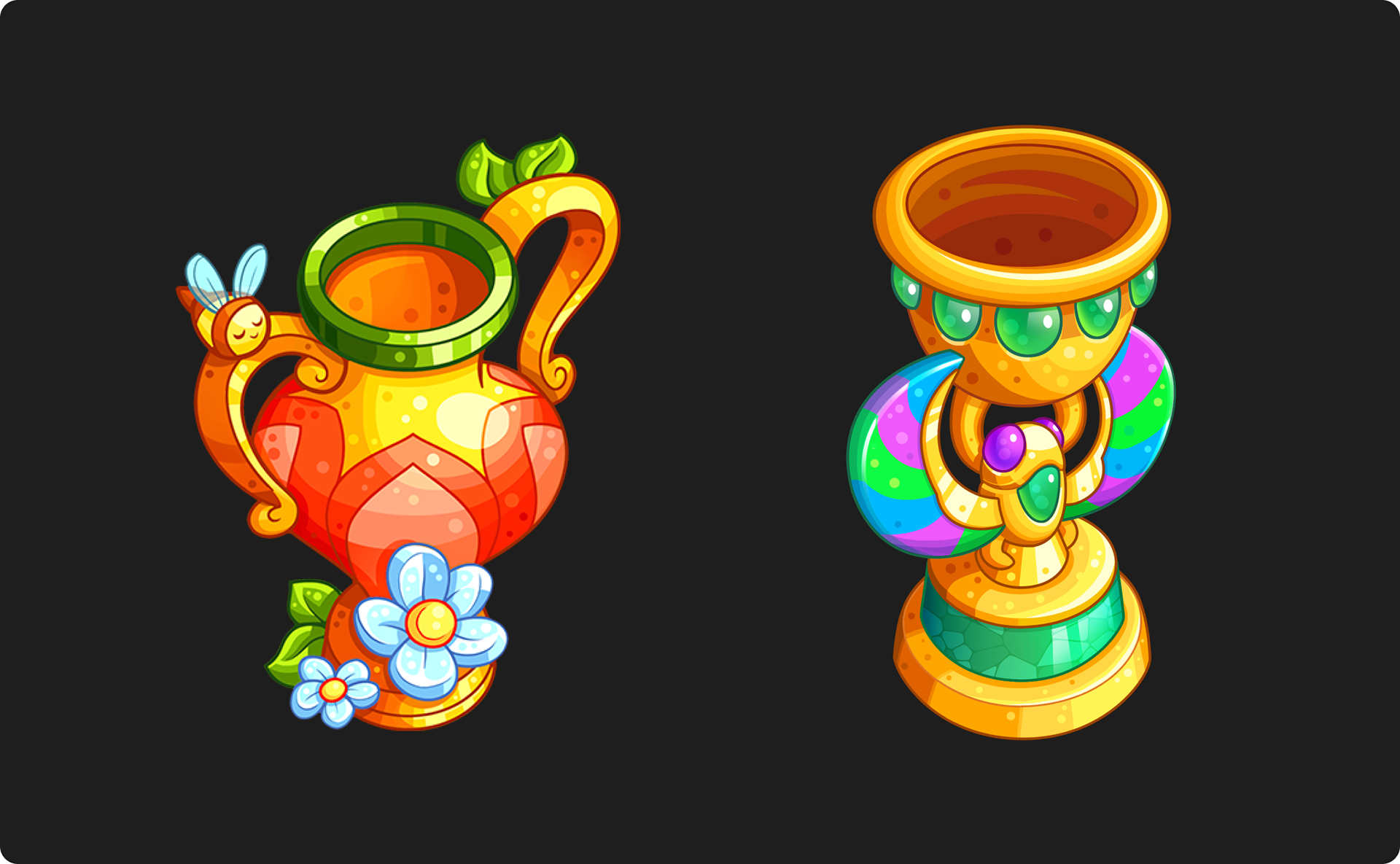
Trophies lvl 3 Polish and Render
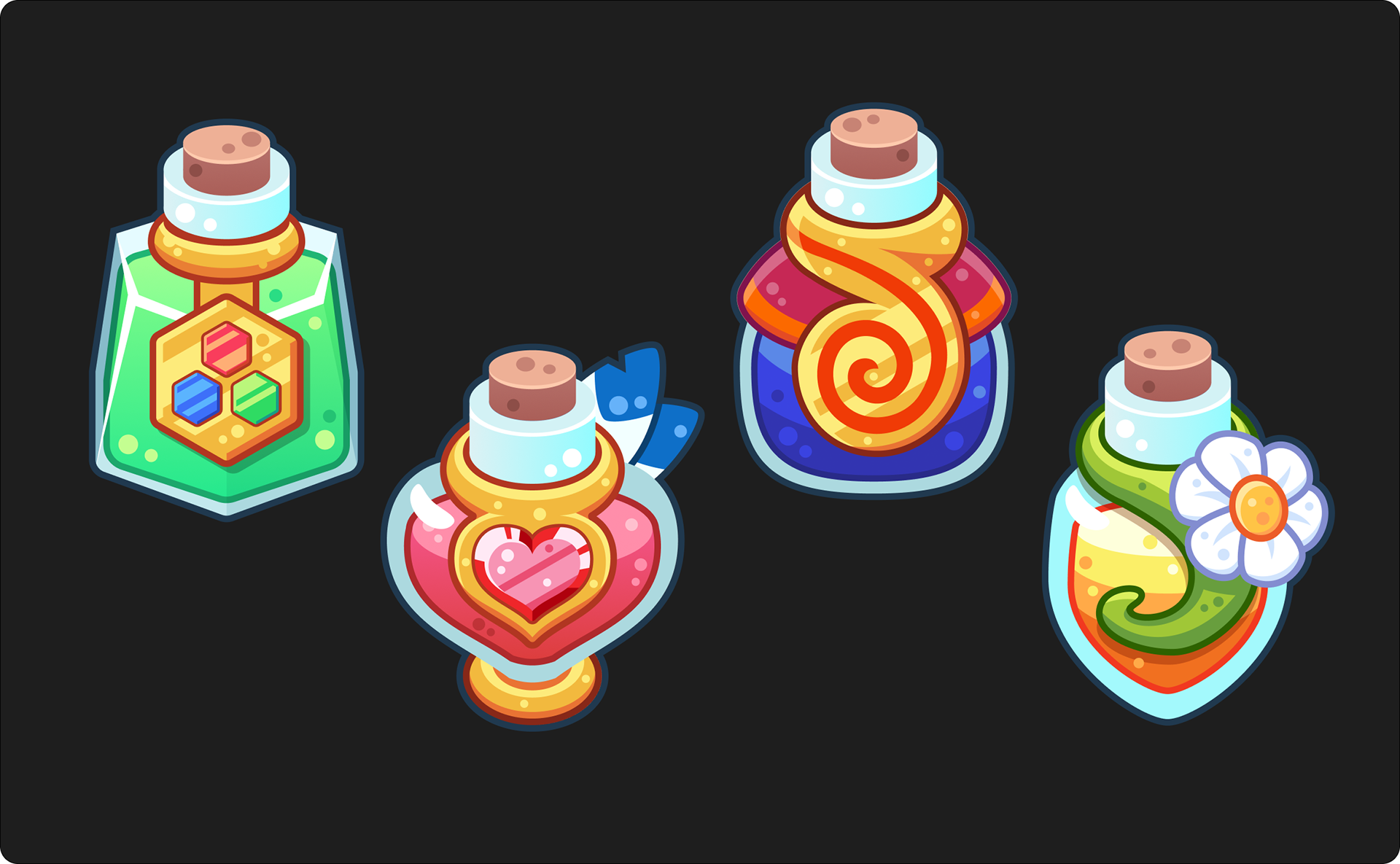
Design Systems
Smart, scalable design systems built for efficiency
I develop modular, well-organized design systems in Figma that make it easy to create, iterate, and scale UI across the game.
These systems focus on componentization and flexibility, allowing teams to adapt buttons, icons, and layouts to different needs without losing consistency.
My approach is to build designs that translate cleanly into Unity, simplifying handoff and speeding up implementation. This includes smart variants, responsive components, and clear documentation for smooth collaboration between design and development.
Below are some examples of components and prototypes demonstrating this mindset.
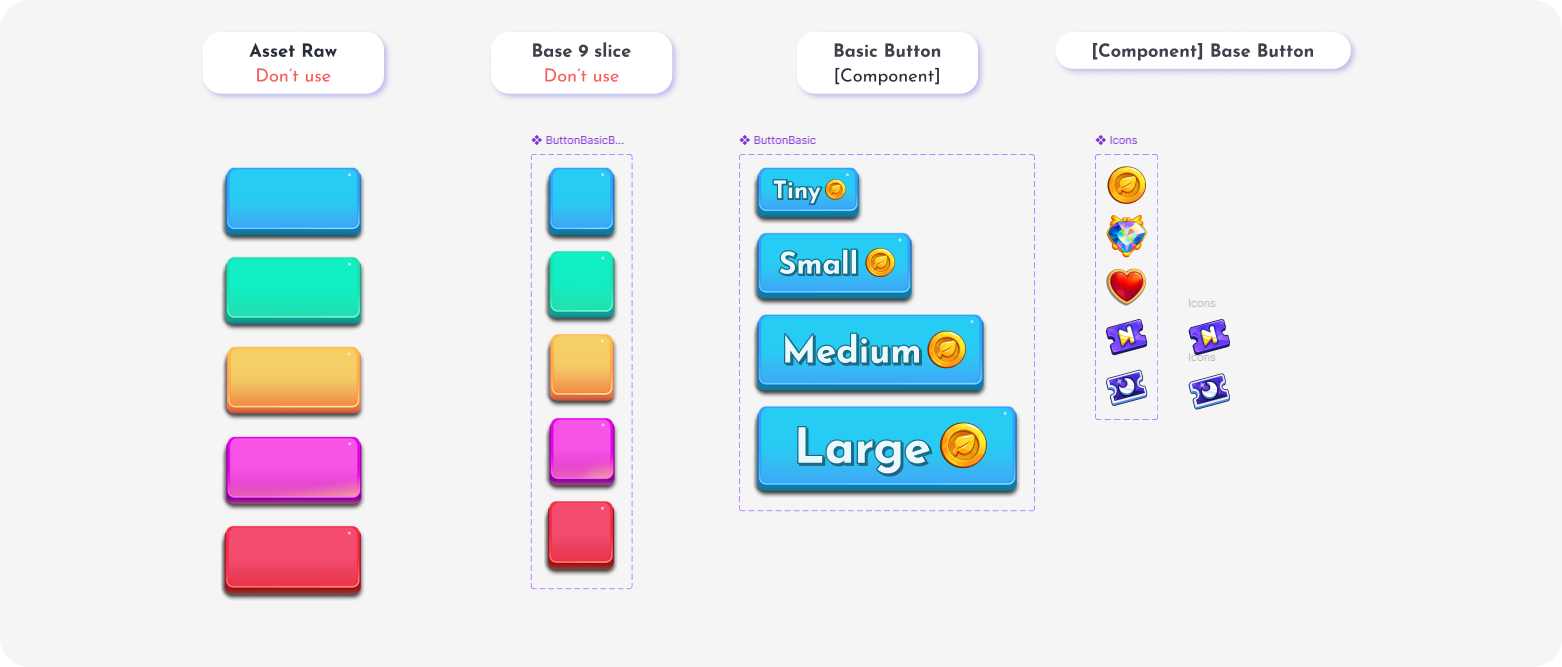
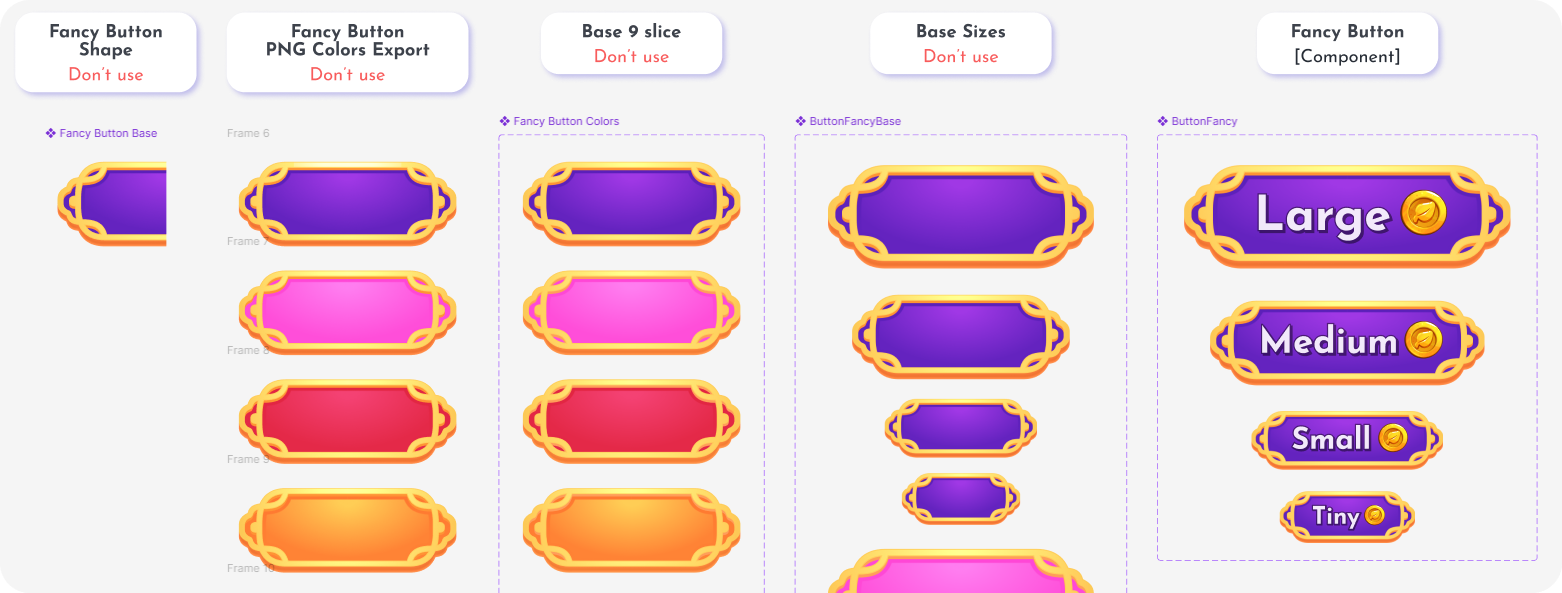
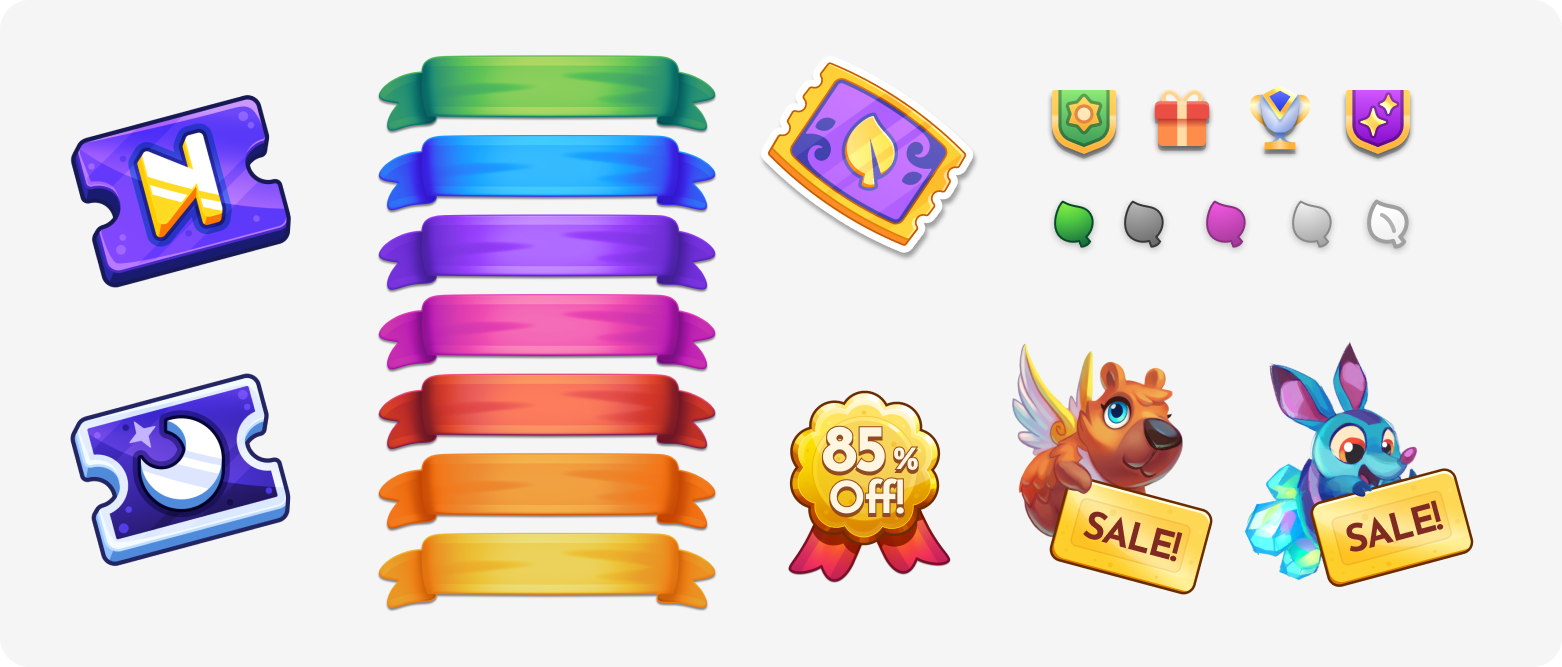
Social media posts
Extending the game’s visual identity beyond the screen
In addition to in-game design, I create social media assets that help communicate updates, events, and key moments to the player community.
These posts maintain the game’s aesthetic while being optimized for quick readability and visual impact on platforms like Instagram, Twitter, and Facebook.
My goal is to keep fans engaged and informed, using strong visuals and clear messaging that complement the game’s world and narrative.
Check out some of my favorite social media designs below.
